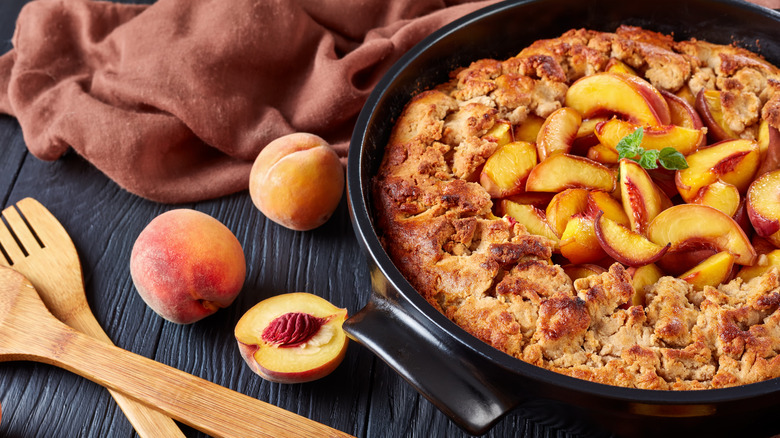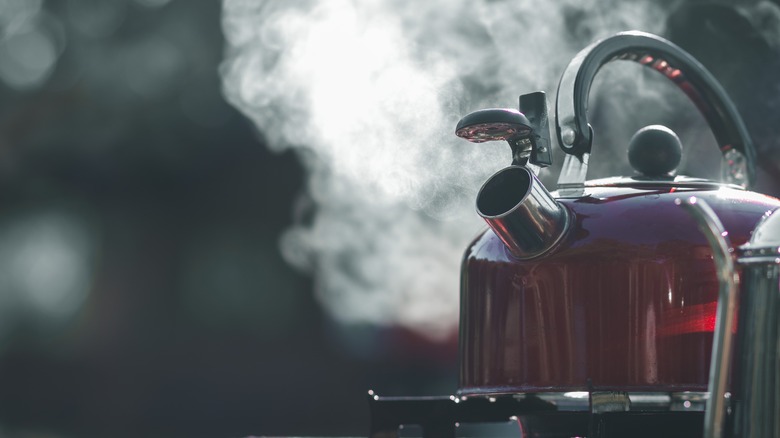The Easy Addition For Crisp Cobbler Crust
If you've ever dined out in the American South, you've most likely encountered a bowl or two of warm, juicy peach cobbler. This dessert reigns across the region, according to Culture Trip, utilizing the sweet, fragrant stone fruit grown en masse across South Carolina and Georgia (via Agricultural Marketing Resource Center), and reaches its apex when topped with a melting scoop of vanilla ice cream.
Quicker and easier than making a pie (because you don't have to roll out any dough), the dessert is made by tossing sliced fruit with sugar, flavorings, and some flour to thicken the juices as the cobbler bakes. Then, depending on the recipe, a type of batter, biscuit, or dough topping is poured, dolloped, or spread across the fruit in the baking dish (via Kitchn), which bakes up into a beautiful golden crust. The crust is probably the best part of a cobbler, and it's especially delectable when it's crisp, providing a textural contrast to the soft fruit below it. And if you love a crunchy cobbler crust, you're going to want to try an unusual technique that produces an especially crackly, shiny one.
Pouring hot water over a cobbler crust renders it surprisingly crunchy
Have you ever heard of a hot water cobbler? The technique was popularized by Renee Erickson, the James Beard Award-winning chef of several Seattle-area restaurants, including The Walrus and The Carpenter (via Sea Creatures), who learned it from Susan Kaplan, the original owner of Erickson's first restaurant. Favored by many food websites, including Epicurious, Kitchn, and Leite's Culinaria — the latter of which deemed the dessert "one of the best stone fruit cobbler specimens ever" — Erickson's cobbler draws upon an unusual method in order to create a crisp, flaky cobbler crust.
As explained by Epicurious, the cobbler starts out in a standard way, with sliced peaches filling a baking dish and a biscuit-like dough getting spread over the fruit. Then comes the interesting part: Granulated sugar is sprinkled atop the layer of dough, and then a half cup of hot tap water is poured over everything. According to the site, the water melts the sugar; then, when the water evaporates in the oven, it leaves behind an impossibly crackly top layer that's reminiscent of the burnt sugar topping of a crème brûlée. As Epicurious notes, the technique doesn't take any longer to make than a standard cobbler recipe, requires no additional equipment, and works perfectly well with all kinds of fruit fillings. So the next time you're set on a cobbler, bring some hot water into the mix and prepare to marvel at the result.

